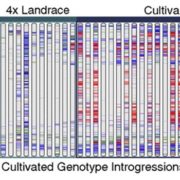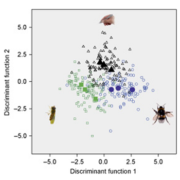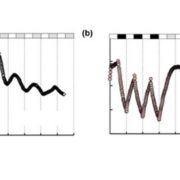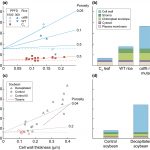Review: The mechanical feedback theory of leaf lamina formation ($) (Trends Plant Sci.)
 The contribution of microtubule orientation to the direction of cell expansion is familiar to most; when microtubules wrap around the middle of a cell like a belt, the cell expands in the perpendicular direction to become longer. Recent studies have extended this idea and proposed that the mechanical forces created by microtubules, along with reinforcing feedback, underly the development of flat leaves (see Zhao et al 2020). Here, Jiao et al. explore this model in the context of leaf evolution. They first consider Zimmermann’s telome theory, proposed more than 80 years ago, which attempted to describe how early plants with bifurcating radially symmetric branches (e.g., Rhynia), morphed towards megaphyll leaves. The authors observe that stages proposed by Zimmermann are difficult to correlate with our current understanding of leaf development. Rather, they suggest, mechanical feedback starting from a flattened primordium provides a better supported model for leaf blade evolution. (Summary by Mary Williams @PlantTeaching) Trends Plant Sci. 10.1016/j.tplants.2020.11.005
The contribution of microtubule orientation to the direction of cell expansion is familiar to most; when microtubules wrap around the middle of a cell like a belt, the cell expands in the perpendicular direction to become longer. Recent studies have extended this idea and proposed that the mechanical forces created by microtubules, along with reinforcing feedback, underly the development of flat leaves (see Zhao et al 2020). Here, Jiao et al. explore this model in the context of leaf evolution. They first consider Zimmermann’s telome theory, proposed more than 80 years ago, which attempted to describe how early plants with bifurcating radially symmetric branches (e.g., Rhynia), morphed towards megaphyll leaves. The authors observe that stages proposed by Zimmermann are difficult to correlate with our current understanding of leaf development. Rather, they suggest, mechanical feedback starting from a flattened primordium provides a better supported model for leaf blade evolution. (Summary by Mary Williams @PlantTeaching) Trends Plant Sci. 10.1016/j.tplants.2020.11.005









